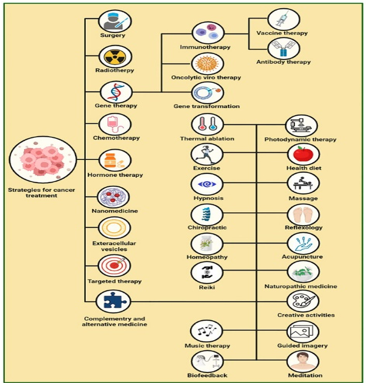Exploring Machine Learning in Lung Cancer: Predictive Modelling, Gene Associations, and Challenges
Keywords:
Lung cancer, prediction, gene association, machine learning, high-throughput genomic data, multi-omics data, support vector machines, random forests, deep understanding, network-based methodologies, predictive modeling, biomarker identificationAbstract
Lung cancer is a disease with a high mortality rate and widespread occurrence. Therefore, developing accurate prediction methods and practical gene association analyses is crucial. The utilization of high-throughput genomic data to reveal significant genetic factors has seen an increase in the application of machine-learning techniques. This document presents a thorough examination of machine learning methodologies that are presently utilized to forecast lung cancer and scrutinize gene correlations. The analysis examines different data types, such as gene expression profiles, genomic variants, and clinical data. The primary focus is on integrating multi-omics data for a more comprehensive understanding. Our study comprehensively examines a variety of machine learning algorithms, including traditional methods such as support vector machines and random forests, advanced deep learning architectures, and network-based methodologies. The following discourse explores the pragmatic utilization of the methods above in predictive modeling, biomarker identification, and drug discovery routes. The article addresses common obstacles in the field, such as interpretability and validation, and proposes potential avenues for future research, such as incorporating multi-omics data and implementing personalized medicine. This survey provides a detailed analysis of the recent advancements in machine learning techniques for lung cancer research. It aims to establish a strong basis for future improvements in diagnosis, prognosis, and treatment strategies.
Downloads
References
Knox, S. S. (2010, April 26). From "omics" to complex disease: a systems biology approach to gene-environment interactions in cancer. PubMed Central (PMC). https://doi.org/10.1186/1475-2867-10-11
Thandra, K. C., Barsouk, A., Saginala, K., Aluru, J. S., & Barsouk, A. (2021, February 23). Epidemiology of lung cancer. PubMed Central (PMC). https://doi.org/10.5114/wo.2021.103829
Molina, J. R., Yang, P., Cassivi, S. D., Schild, S. E., & Adjei, A. A. (n.d.). Non–Small Cell Lung Cancer: Epidemiology, Risk Factors, Treatment, and Survivorship. PubMed Central (PMC). https://doi.org/10.4065/83.5.584
Machine learning for multi-omics data integration in cancer. (2022, January 22). Machine Learning for Multi-omics Data Integration in Cancer - ScienceDirect. https://doi.org/10.1016/j.isci.2022.103798
Ruan, X., Ye, Y., Cheng, W., Xu, L., Huang, M., Chen, Y., Zhu, J., Lu, X., & Yan, F. (2022, May 6). Multi-Omics Integrative Analysis of Lung Adenocarcinoma: An in silico Profiling for Precise Medicine. Frontiers. https://doi.org/10.3389/fmed.2022.894338
Cano-Gamez, E., & Trynka, G. (2020, April 6). From GWAS to Function: Using Functional Genomics to Identify the Mechanisms Underlying Complex Diseases. Frontiers. https://doi.org/10.3389/fgene.2020.00424
Pai, A. (2020, February 17). CNN vs. RNN vs. ANN - Analyzing 3 Types of Neural Networks in Deep Learning. Analytics Vidhya. https://www.analyticsvidhya.com/blog/2020/02/cnn-vs-rnn-vs-mlp-analyzing-3-types-of-neural-networks-in-deep-learning/
A novel candidate disease gene prioritization method using deep graph convolutional networks and semi-supervised learning - PubMed. (2022, October 14). PubMed. https://doi.org/10.1186/s12859-022-04954-x
Mathew, C. J., David, A. M., & Joy Mathew, C. M. (2020, December 11). Artificial Intelligence and its future potential in lung cancer screening. PubMed Central (PMC). https://doi.org/10.17179/excli2020-3095
Vamathevan, J., Clark, D., Czodrowski, P., Dunham, I., Ferran, E., Lee, G., Li, B., Madabhushi, A., Shah, P., Spitzer, M., & Zhao, S. (n.d.). Applications of machine learning in drug discovery and development. PubMed Central (PMC). https://doi.org/10.1038/s41573-019-0024-5
Vamathevan, J., Clark, D., Czodrowski, P., Dunham, I., Ferran, E., Lee, G., Li, B., Madabhushi, A., Shah, P., Spitzer, M., & Zhao, S. (n.d.). Applications of machine learning in drug discovery and development. PubMed Central (PMC). https://doi.org/10.1038/s41573-019-0024-5
Genome, transcriptome, and proteome: the rise of omics data and their integration in biomedical sciences - PubMed. (2018, March 1). PubMed. https://doi.org/10.1093/bib/bbw114
Krassowski, M., Das, V., Sahu, S. K., & Misra, B. B. (2020, November 20). State of the Field in Multi-Omics Research: From Computational Needs to Data Mining and Sharing. Frontiers. https://doi.org/10.3389/fgene.2020.610798
Translational bioinformatics and healthcare informatics: computational and ethical challenges - PubMed. (2009, September 16). PubMed. https://pubmed.ncbi.nlm.nih.gov/20169020/
https://academic.oup.com/nar/article/45/D1/D833/2290909. (n.d.). https://academic.oup.com/nar/article/45/D1/D833/2290909
Witte, J. S. (n.d.). Genome-Wide Association Studies and Beyond. PubMed Central (PMC). https://doi.org/10.1146/annurev.publhealth.012809.103723
Next Generation Sequencing - an overview | ScienceDirect Topics. (n.d.). Next Generation Sequencing - an Overview | ScienceDirect Topics. https://doi.org/10.1016/B978-0-12-801418-9.00002-0
Abass, Y. A., & Adeshina, S. A. (n.d.). Deep Learning Methodologies for Genomic Data Prediction: Review | Atlantis Press. Deep Learning Methodologies for Genomic Data Prediction: Review | Atlantis Press. https://doi.org/10.2991/jaims.d.210512.001
Muzio, G., O’Bray, L., & Borgwardt, K. (2021, March 1). Biological network analysis with deep learning. OUP Academic. https://doi.org/10.1093/bib/bbaa257
State-of-the-art in artificial neural network applications: A survey. (2018, November 23). State-of-the-art in Artificial Neural Network Applications: A Survey - ScienceDirect. https://doi.org/10.1016/j.heliyon.2018.e00938
Piñero, J., Bravo, L., Queralt-Rosinach, N., Gutiérrez-Sacristán, A., Deu-Pons, J., Centeno, E., García-García, J., Sanz, F., & Furlong, L. I. (2016, October 19). DisGeNET: a comprehensive platform integrating information on human disease-associated genes and variants. PubMed Central (PMC). https://doi.org/10.1093/nar/gkw943

Downloads
Published
How to Cite
Issue
Section
License

This work is licensed under a Creative Commons Attribution-ShareAlike 4.0 International License.
All papers should be submitted electronically. All submitted manuscripts must be original work that is not under submission at another journal or under consideration for publication in another form, such as a monograph or chapter of a book. Authors of submitted papers are obligated not to submit their paper for publication elsewhere until an editorial decision is rendered on their submission. Further, authors of accepted papers are prohibited from publishing the results in other publications that appear before the paper is published in the Journal unless they receive approval for doing so from the Editor-In-Chief.
IJISAE open access articles are licensed under a Creative Commons Attribution-ShareAlike 4.0 International License. This license lets the audience to give appropriate credit, provide a link to the license, and indicate if changes were made and if they remix, transform, or build upon the material, they must distribute contributions under the same license as the original.





